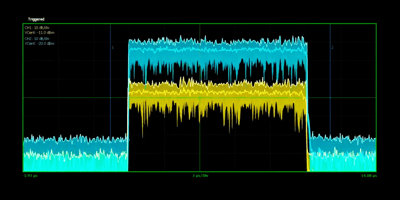Crest factor is a significant ratio to measure during the testing of wireless systems and devices....
How Can You Analyze Signal Behavior with Crest Factor and Statistical Measurements?
A characteristic of orthogonal frequency-division multiplexing (OFDM) and other digital modulation schemes is high crest factor values or peak-to-average-power ratios (PAPR). High PAPR signals can strain amplifiers, leading to challenges such as waveform clipping, nonlinearities, and increased bit errors. Since crest factor is a single numerical value, the complementary cumulative distribution function (CCDF) can be used to provide a more comprehensive view of signal behavior.
Uncover the importance of crest factor and CCDF in our "RF & Microwave FAQ: Crest Factor and Statistical Measurements" playlist.
RF and microwave frequently asked questions featured in the playlist include:
What is crest factor?
Crest factor, also referred to as the peak-to-average power ratio (PAPR), is a figure of merit used to better understand the shape of a waveform. It takes the ratio of the peak amplitude to the average amplitude or root-mean-square (RMS) value.
The crest factor of a pulsed signal can be calculated by taking the peak envelope power over either the average power during the pulse repetition interval (average power) or the average power of the pulse (pulse average power).
What is the complementary cumulative distribution function?
The complementary cumulative distribution function (CCDF) is a statistical representation of how frequently a specific crest factor occurs, showing the percentage of time or probability (y-axis) that a signal's crest factor is equal to or greater than a certain crest factor value (x-axis).
How do you interpret a CCDF plot?
Let’s say 0.01% is the probability percentage of interest for a CCDF plot. If the point where 0.01% on the y-axis intersects with the CCDF curve is equal to 10 dB (x-axis), then the signal’s crest factor is equal to or greater than 10 dB for 0.01% of the time. Another way to interpret this result is that the signal’s crest factor is equal to or less than 10 dB for 99.99% of time.
How can crest factor and CCDF assess amplifier linearity?
Amplifier linearity is verified if the CCDF input and output curves follow a near identical path with similar crest factor values. Observing a notable reduction in the output signal’s crest factor, however, reveals waveform clipping, system nonlinearities, and amplifier compression.



